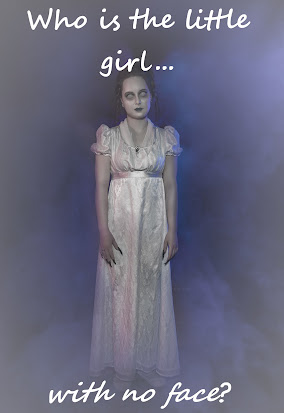We shared our own experiences of the reactions we had received when we told friends, family, or even strangers what we write. Speaking for myself, I have had many double-takes, raised eyebrows, quick changes of subject... I must look like a romance author, or maybe an author of children's books (well I did dabble once, many years ago) or perhaps my late mother's preferred option, "Why don't you write a nice crime story. Like Agatha Christie."
"Like Agatha Christie", eh? Now there's an interesting concept.
You see we all think we know what Agatha Christie wrote. Those wonderful, apparently simple but actually quite intricate stories featuring that nice old lady from St Mary Mead - Miss Marple. (Joan Hickson was by far my favourite screen version). And that funny little Belgian detective Hercule Poirot (David Suchet is my preferred performance). Let's not forget Tommy and Tuppence Beresford, Ariadne Oliver (said to be modelled on Christie herself), oh, and Parker Pyne. Then there's Harley Quin - but here is where we move into a somewhat different dimension.
Those who have read up on her a little will know she also wrote romance novels, under the pen name Mary Westmacott.
But back to Harley Quin for a moment (not to be confused with the DC Comics character Harley Quinn). Here we have an entirely different person. The mysterious Mr Quin appears as if from nowhere in a flash of coloured lights, just at the right moment so that he can lead his friend, Mr Satterthwaite, to solve crimes. Quin possesses uncanny insight, seemingly supernatural abilities. He was also, apparently, Christie's favourite creation.
Her short story collection, The Hound of Death, first published in 1933, contains some wonderfully scary tales. Try The Last Seance, The Strange Case of Sir Arthur Carmichael, The Gypsy, and The Call of Wings. All of these would earn their place in any anthology of horror stories published today.
So, yes, Mum, I love to write supernatural, scary, Gothic, ghostly horror. Just like Agatha Christie!
Of course, back in the 1930s, 'horror' was not a 'thing'. In fact, until relatively recently, there were few categories - or genres as we now call them - and it seems some women writers would prefer not to be associated with that word as it often conjures up images of a male- dominated slash, torture, zombie-esque bloodfest of flying body parts and buckets of Kensington Gore. Ask your average person (who insists they don't read 'horror') if they read Stephen King and many will respond with an enthusiastic, "Yes!" But then, I don't think Stephen King describes himself as a horror author these days. Understandably, as much of his later work has moved into the realms of sci-fi, thriller, mystery, and coming of age territories. But his earlier books? The ones everyone associates with him? Carrie, The Shining, Salem's Lot, Pet Sematary, Cujo? They're horror, folks.
Ask anyone to name a female horror author and they soon run out after Mary Shelley and Shirley Jackson, with possibly the late Anne Rice gaining a well-earned mention. But there are many wonderful female horror authors out there writing today. Some prefer to describe their work as 'dark fiction' and, indeed many excellent female writers in the genre use descriptors such as 'suspense', 'speculative fiction', 'dystopian', in order to distance themselves from the overtly graphic horror which pushes itself well and truly to the fore.
I am going to apologise in advance for serious omissions here but if you are looking for some scary stories written by women, you will find a wide spectrum including Gothic, ghostly, supernatural, psychological, crime, paranormal, demonic, folk horror...the list is increasing all the time. Diverse authors such as: J.H. Moncrieff, V. Castro, P.D. Cacek, Somer Canon, Gaby Triana, Laurel Hightower, Megan Hart, Faye Snowden, Melissa Prusi, Stephanie Ellis, Marie O'Regan, Jennifer Soucy, Janine Pipe... The list is growing but we need more.
Women can - and do - bring a different voice to horror. It's a fun genre where you can break rules, create worlds and scare readers in a delicious way - one where YOU write the rules.
If you have a scary story in you, what are you waiting for? Fire up your laptop, write it, rewrite it, get feedback, and then, when it's ready, submit it to a publisher and don't let anyone tell you that nice girls don't write horror. After all, if it was good enough for Agatha Christie...
Now, click on the link below and find out what happened when four female horror and dark fiction writers - V. Castro, J.J. Moncrieff, P.D. Cacek and I - got together for Women in Horror Month:

















